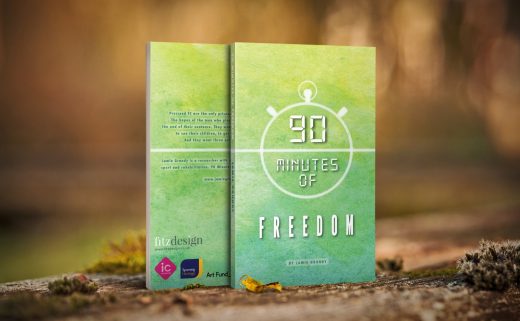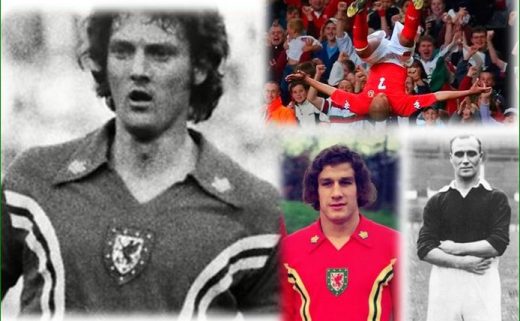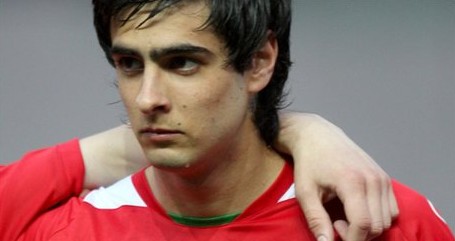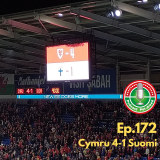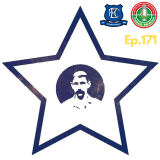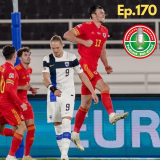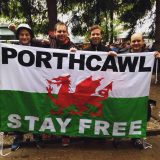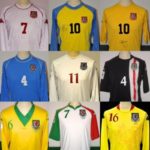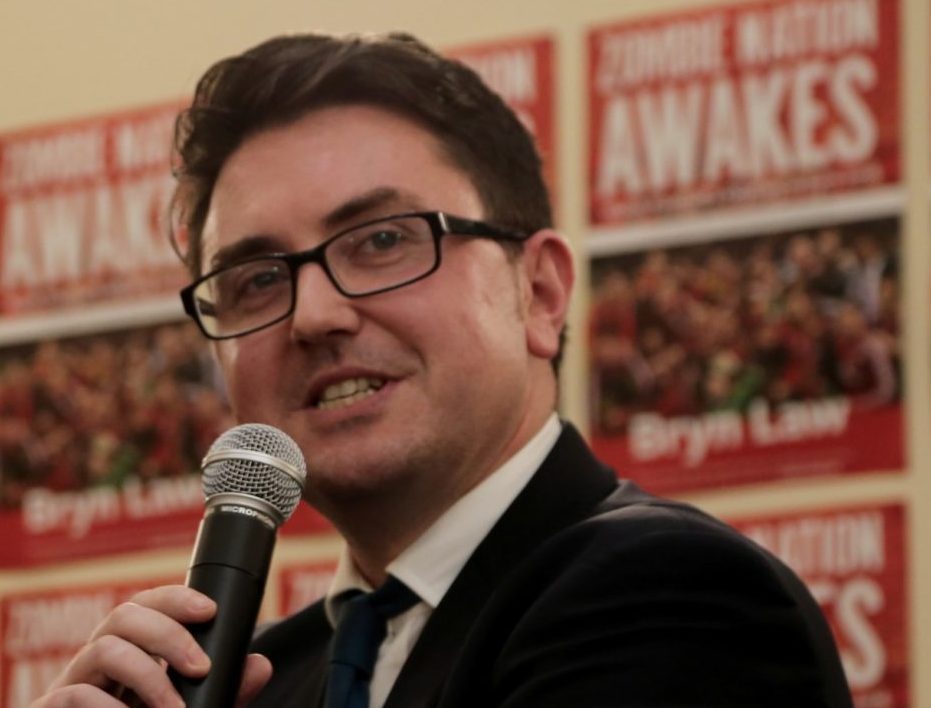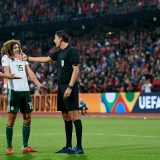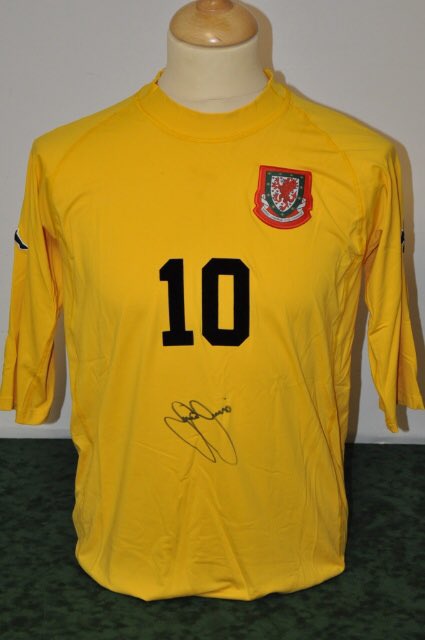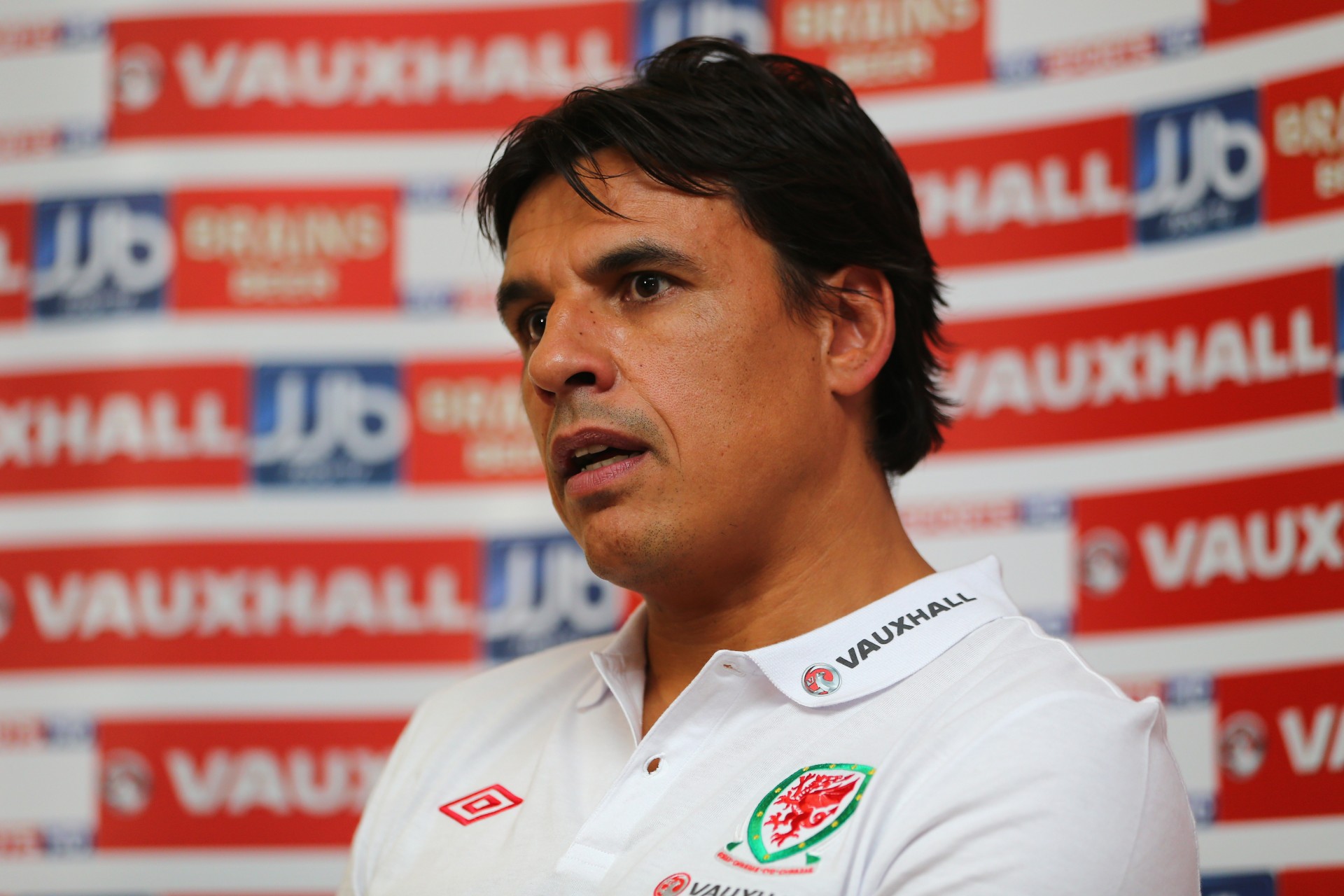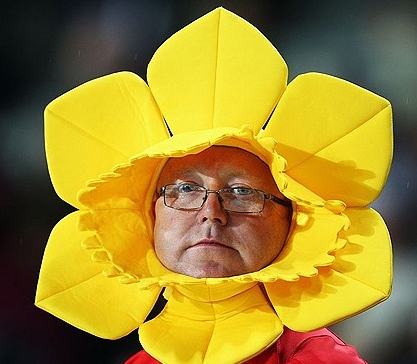Brighton & Hove Albion Wales XI
You might expect, for a club closer to France than Fishguard, that Brighton & Hove Albion would have relatively few connections with Wales. You would be wrong.
Award-winning author and Brighton fan Spencer Vignes, raised in Sussex but a long-time Cardiff resident, selects his all-time Wales XI from the club’s annals.
Dave Hollins (goalkeeper)
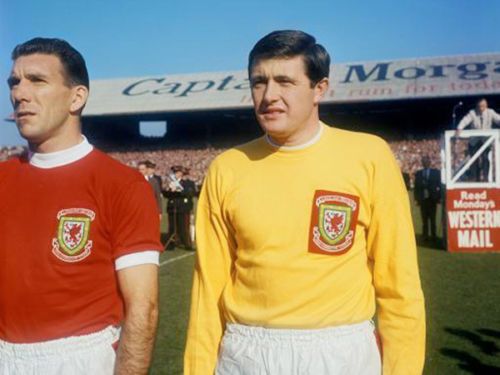
Dave Hollins has to go down as one of the most surprising international selections from Albion’s ranks ever. Not because he was useless, you understand. Quite the opposite, in fact. It’s just that until Albion’s then manager Billy Lane told him he’d been selected to represent Wales under-23s against Scotland at the Racecourse Ground in November 1959, Dave wasn’t even aware he had any Welsh connections. “I’d grown up in Guildford,” he once told me. “Until I came to Brighton that was pretty much all I knew. Guildford born and bred…..or so I thought. Anyway, one day Billy Lane calls me into his office and says he’s got wonderful news for me. I’d only just started playing regularly for the first XI. I thought ‘Crikey, I can’t be on the move already?’ And Billy says ‘Congratulations, you’ve been selected to play for the Welsh under-23s against Scotland’. And I sat back and thought ‘How can this be?’ It turned out that I was Guildford raised but Bangor, as in north Wales, born. My father, who was also a goalkeeper, had finished his playing career with Bangor City in the Welsh League and that’s where I’d been born, something I was totally and utterly unaware of. That qualified me to play for Wales. I just couldn’t believe it….but in a nice way.” Dave went on to play for several other clubs, including Newcastle United, winning 11 full Welsh caps spanning 1962 to 1966.
Jack Jenkins (right-back)
Born in deepest Denbighshire, Jack Jenkins started his career with Mold Town before moving south to play for Mardy, then in the Southern League, guesting at the age of 20 for a Billy Meredith XI against a South Wales XI in an international trial match at Ninian Park. I mean Billy Meredith! That’s how long ago we’re talking here. Nevertheless, it would be another 11 years before Jack made his first full Welsh appearance in a 2-0 win over Scotland in 1924, by which time he was living in and playing for Brighton. Between 1922 and 1929, the sturdy defender appeared 231 times in an Albion shirt winning eight full caps in the process, the club record for caps earned while on Brighton’s books, which stood for 55 long years until being surpassed in 1980 by the Republic of Ireland’s Mark Lawrenson.
Des Tennant (centre-back)
Brighton have Barry Town’s former player-manager Les Jones to thank for Des Tennant. When Les fetched up in Sussex in 1948, principally as a scout but also on a part-time playing basis, he decided to bring Aberdare-born Des along with him. Over the ensuring 11 years Des clocked up 424 appearances for the Seagulls (scoring 47 goals in the process), the vast majority of them, admittedly, at right-back where I’ve already selected Jack Jenkins. But, I ask, how can you leave out a man with a record like that? Affectionately nicknamed ‘The Tank’ for his uncompromising style, even by 1950s standards, Jack would in all probability be my choice as captain.
Nathan Jones (centre-back)
Not to be confused with the popular song of the same name originally recorded by The Supremes, Nathan Jones joined the Albion in 2000 and played the majority of his 160 games at left-back. One glance at the titan occupying that position in my team should, however, have you nodding in agreement with my decision to field him on the left side of central defence instead. A former Cardiff City youth team player, Nathan arrived at Brighton’s temporary Withdean home via various far flung ports (including spells playing in the Spanish lower leagues), his five years in Sussex coinciding with three promotion winning campaigns. Always potential coach/manager material, ‘Jonesy’ – a devout Christian whose range of tattoos includes praying hands and the crucifixion – is currently in charge at Luton Town.
Mel Hopkins (centre-back)
Oh my good Lord, where to start with Mel Hopkins? Born in the Rhondda, a member of Wales’ side at the 1958 World Cup finals (where he played in all five games), 34 caps in total, over 200 appearances for Tottenham Hotspur, an inspiration to countless boys (including myself) growing up in Sussex during the 1970s, 80s and 90s as a coach at grass-roots level. Everybody loved Mel except, perhaps, for any right-winger unfortunate enough to be pitted against him. One of the best, if not the best, full-backs of his era, Mel’s halcyon days had passed when he signed for Brighton in 1964, yet that didn’t stop him becoming a crowd favourite and an integral part of the side which clinched the Fourth Division title in 1964/65. Standing room only, so there was, for his funeral in Worthing back in 2010, something which tells you everything you could wish to know about a wonderful man.
Billy Reed (outside-right)
I never met Billy Reed – he’d long since retired before I was even born – but I wish I had. In pictures he looks just like you’d imagine right-wingers from the 1940s and 50s to be, the Spitfire pilots of the football field renowned as much for their dashing appearance as daring manoeuvres. Another one from the Rhondda, Billy came to Brighton from Cardiff City’s reserve team in 1948, scoring 37 goals and creating countless others over the course of 132 appearances spanning five years. He later moved to Ipswich Town where, get this, he became that club’s first player ever to win full international honours, playing for Wales against Yugoslavia and Scotland during the 1954/55 season. Forced into retirement in 1958 after playing just eight games for Swansea Town, he later worked as a local government officer in Abertawe as well as doing some scouting for Wales during Dave Bowen’s 10-year reign as national team manager from 1964 to 1974.
Andrew Crofts (midfield)
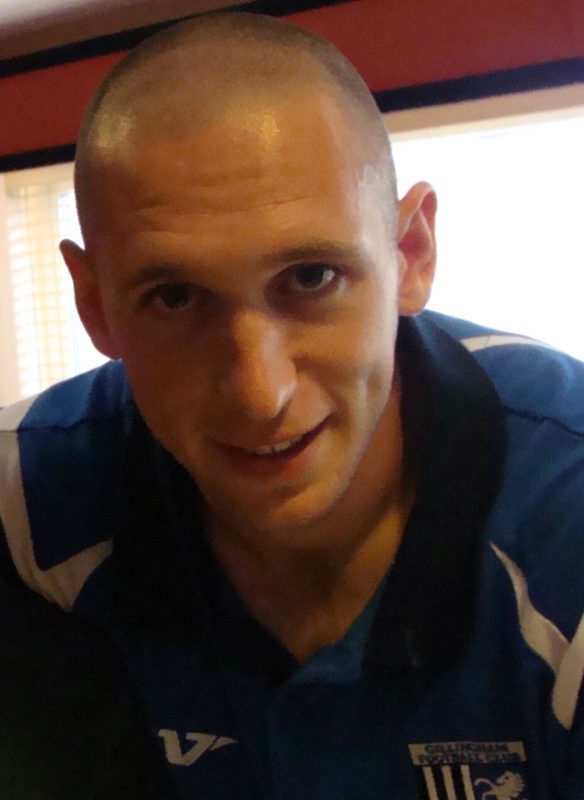
I identify with Andrew. I grew up in Sussex with family in Cardiff. A child of the M4, in other words. Ditto Kent-born Andrew who qualified to play for Wales through his grandfather. Rather than head home post-World War Two, grandpa Crofts chose to stay in the Medway towns and marry the local girl he’d met instead. Andrew enjoyed two spells with Brighton – the first at our temporary Withdean home, the second after we’d moved into the all mod cons Amex Stadium – during a playing career which lasted the best part of 20 years, earning 29 caps under John Toshack, Brian Flynn, Gary Speed and Chris Coleman. Like Nathan Jones, he always seemed management material. Having secured his coaching badges through the FAW route favoured by so many outside as well as inside Wales, Andrew is now in charge of Brighton’s under-23 side. And you know what? I wouldn’t bet against him managing Wales one day. You heard it here first!
Peter Sayer (midfield)
Cards on the table, I just loved Peter Sayer. When I first started supporting Brighton in 1978, ‘Leo’ hadn’t long signed from Cardiff City where his eye-catching performances throughout 1976 and 1977 had catapulted him into the limelight. Part of the Albion side which won promotion to football’s top flight for the first time in 1979, Peter nevertheless lost his place the following season and, alas, that was pretty much that. He liked a night out, did Pete, and Brighton’s not a bad place on that front. It wasn’t such an issue when Brighton were in the old Second Division but there was simply no hiding place once we’d touched down in the Promised Land, where mistakes get punished and you simply have to be at your best week in, week out. “The best couple of years of my life,” Pete once said to me of his spell on England’s south coast.
Peter O’Sullivan (outside-left)
Peter O’Sullivan should be familiar to all of you, certainly any Wales fan over the age of, say, 50. The fact that he isn’t is down to two men – Leighton James and Mickey Thomas. Despite being, in my ever so humble opinion, a naturally more gifted left-sided footballer than either man, ‘Sully’ probably paid the price in terms of international recognition by being loyal to Brighton to a fault. Even when Albion were, to be frank, at their crappiest during the early to mid-seventies, the lad from Colwyn Bay – who’d come through the Manchester United youth system during the latter stages of the Best and Charlton era – insisted on staying put. In time, the rest of the world discovered what everyone in Sussex already knew – that ‘Sully’ was a footballing genius. Alas, when his moment finally came in the wake of Brighton’s promotion to the top flight in 1979, the international boat had sailed, three full caps being a paltry return for someone so talented.
Kurt Nogan (striker)
“There’s a lot of similarities between Cardiff and Brighton. There’s the same vibe. You know, the bars, the nightlife, you’re by the coast, that kind of thing. They always reminded me of each other.”
Kurt Nogan
Which probably helps explain why Grangetown lad Nogan was such a success at the Goldstone Ground, Brighton’s home for 95 years until 1997. The poor lad couldn’t hit a barn door to start with. But then, aided and abetted by a freak goal against Bournemouth (a goalkeeper’s clearance which rebounded off his backside), Kurt morphed seemingly overnight into some kind of superman, scoring a remarkable 60 goals in 80 appearances only to endure another loss of form towards the end of his three year spell at the club. ‘No-no, no-no-no-no, no-no-no-no, no-no-no Kurt Nogan’ went the terrace chant, sung to the tune of 2 Unlimited’s ‘No Limit’. Awful song, fondly remembered player.

Dean Saunders (striker)
“The first time I saw him was for Swansea reserves against Brighton reserves and I couldn’t believe what I was watching,” recalls former Albion manager Chris Cattlin of the circumstances that brought Dean Saunders from the Vetchfield to the Goldstone back in 1985. “I got on the phone the next morning to speak to John Bond, Swansea’s manager, and he wanted £15,000 for him – which we didn’t have. At the end of that season, by a fluke, they gave him a free transfer and only two people came in for him – me, and Trevor Cherry at Bradford. I nipped him down here right away and said “Come and play for me and you’ll be a Welsh international this season and get between 15 and 20 goals for Brighton.” I always remember him saying “How much is my signing on fee?” I said “What was your train fare from Swansea?” He said “Eighteen pounds.” I said “Ken Calver (Albion’s secretary) is in the office. Go and get that off him, be down here for pre-season training and we’ll watch you go.” And we did.” The rest, as they say, is history. Sold to Oxford United in 1987 for a miserly £60,000 simply to cut the wage bill, Dean’s departure came to epitomise Brighton’s ailing financial state during the late eighties and early nineties. Quite possibly the best £18 we’ve ever spent, mind.

